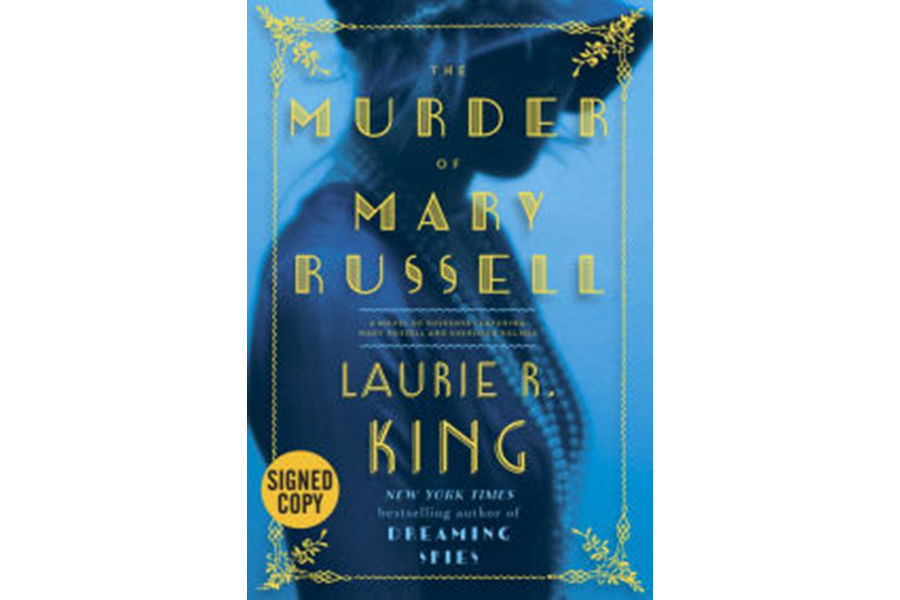'The Murder of Mary Russell' explores the women closest to Sherlock Holmes
Loading...
The new novel from Laurie King, The Murder of Mary Russell, is the latest in her long-running series of mysteries starring sleuth and scholar Mary Russell and her much older and somewhat better-known husband, Sherlock Holmes. The book's title is cheekily intended to give heart palpitations to fans who've been enjoying this series since it began in 1994.
Holmes and Russell first meet in 1879 in the pages of King's novel "The Beekeeper's Apprentice," when a teenage Mary Russell, living with an aunt in rural Sussex, encounters a 50-something Holmes who's retired from his London life as the world's only unofficial consulting detective and has taken up a more peaceful country life. The two quickly recognize each other as kindred spirits, and the winning quirkiness of the whole series of books is typified by the fact that there's no sentimental blossoming of romance: The pair basically reason themselves into love with each other.
They marry, and a string of adventures ensues, seemingly culminating in this latest one, with its ominous title. The year is now 1925, and the peace of the Holmes residence in Sussex is broken one day when Mary Russell is interrupted from her gardening by the arrival of a man looking for her elderly housekeeper, Clara Hudson, and claiming to be her son. And since he makes this claim with a pistol pointed at her heart, it naturally gets Mary's attention.
Fans of Arthur Conan Doyle's Sherlock Holmes stories will know Mrs. Hudson as the redoubtable landlady of 221b Baker Street. In those stories, she lays out breakfast, carries in tea, and huffily disapproves of the band of street-boys Holmes refers to as his “Irregulars.” In Doyle's world, she's the quintessential background figure. In "The Murder of Mary Russell," the man calling himself Samuel Hudson and claiming to be her son taunts Mary with this very characterization. “Butter wouldn't melt in the old lady's mouth,” he sneers. “How many years has she been washing your dishes and tidying your messes, and you without a clue what's under your nose?”
Leaping narrative energy has always been a hallmark of this series, and it reaches something of a peak in this latest volume. King stops everything at the point of Samuel Hudson's gun and then daringly splits her story into three parallel paths. Mrs. Hudson returns to the Sussex cottage and finds Mary gone, large, fresh blood stains on the floor, and a token left behind that makes her certain that her past has come back to haunt her. Mary Russell, staring into the barrel of her visitor's gun, feverishly tries to understand what's happening and how to survive it, and Sherlock Holmes, encountering what looks like the murder scene of his beloved wife, overcomes his feelings of panic and brings his famous powers of detection to bear in unraveling the mystery of what happened in his home.
King so deftly shifts between these three narrative strands – the peril of Mary Russell, the investigation of Sherlock Holmes, and the surprising personal history of the woman who now calls herself Clara Hudson – that despite the fact that half the book is taken up in relating background, the lean momentum of the story never falters. Instead, the three stories braid together and reinforce each other's dramatic urgency (as Holmes laconically observes at one point, “Delay is a time-honoured means of building tension”).
It's a stunning prolonged feat of storytelling, and it succeeds in making "The Murder of Mary Russell" the best installment so far in an excellent series, and its centerpiece is the fascinating life history King gives to that familiar fixture, Mrs. Hudson, a woman who likes to keep “her view of the world unimpeded.” In her segments of the novel, readers are taken back to the struggling girlhood of Clarissa Hudson and given a fast-paced account of the evil and violence that originally brought her into contact with a young man named Sherlock Holmes and linked their lives together for the following half-century. In contention with a heroine at gunpoint and one of the world's most popular fictional detectives investigating his most personal case, this extended backstory of a supporting character should immediately irritate and bore the reader, and yet, happily, this never comes close to happening.
Instead, the story of Mrs. Hudson will change the way even the most steadfast Holmes fans see this familiar character. And even in the midst of the book's tension, King manages to work in some of the signature dry wit that makes this series so delightful (“One thing Clara Hudson had learned from the past forty-five years was that any catastrophe could be softened by tea”).
"The Murder of Mary Russell" dispenses its secrets at carefully-controlled intervals right up to its very last pages. It will please the fans King has already earned over the last two decades, and, since it wears its own past so lightly, it will make plenty of new fans as well.








